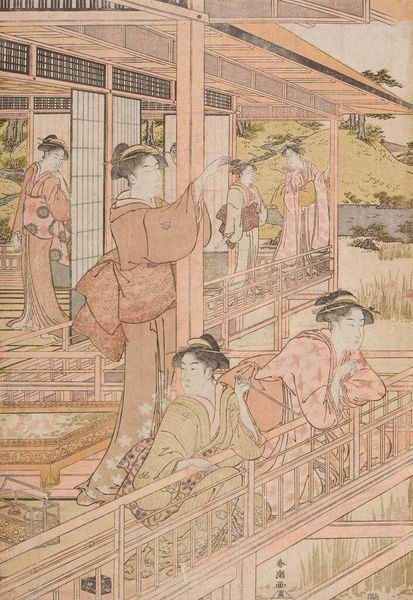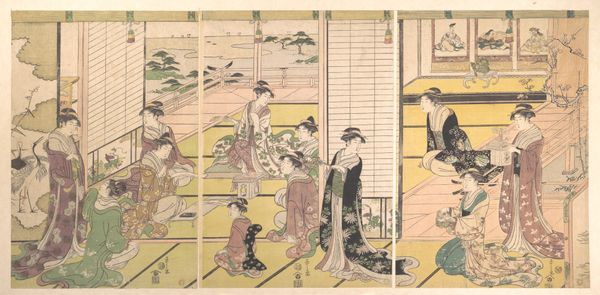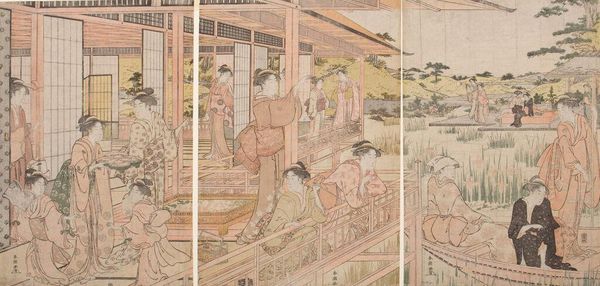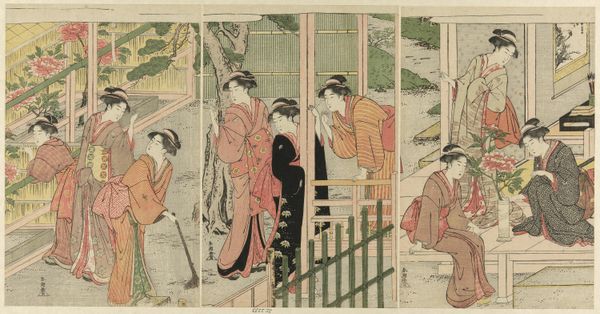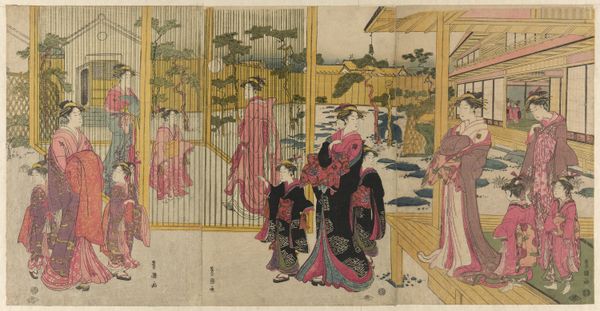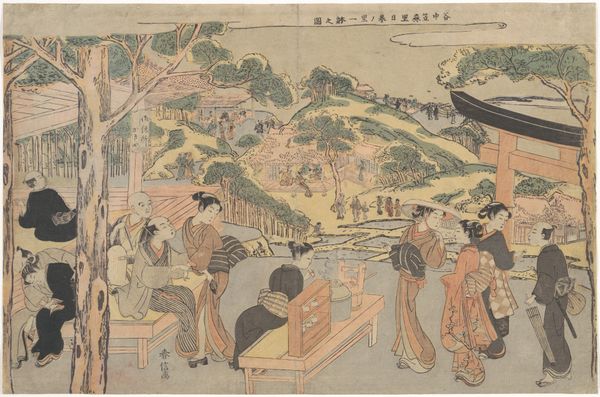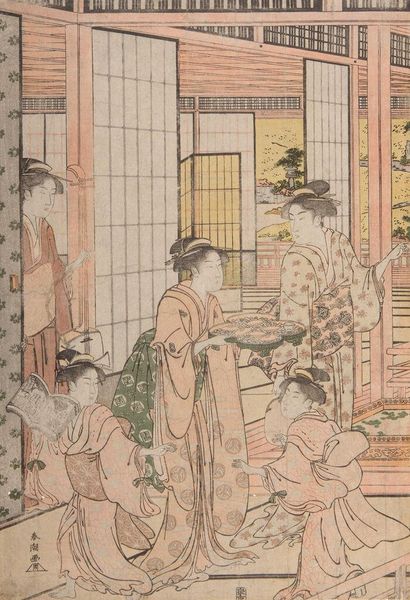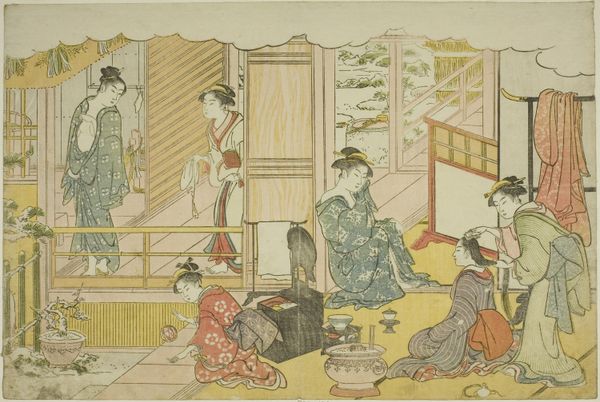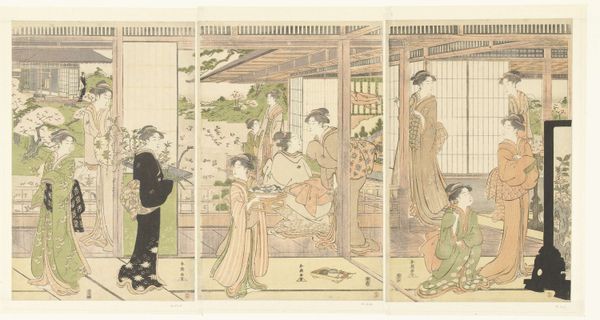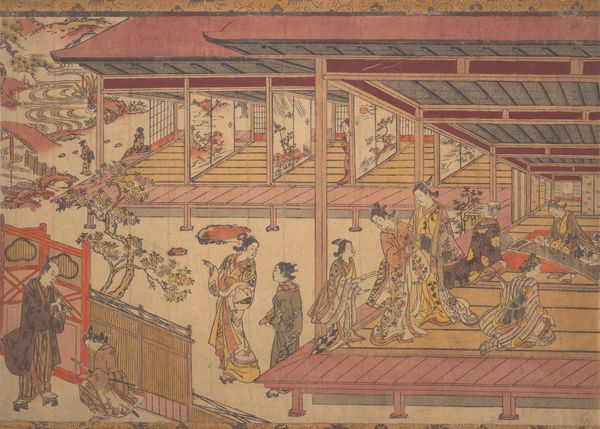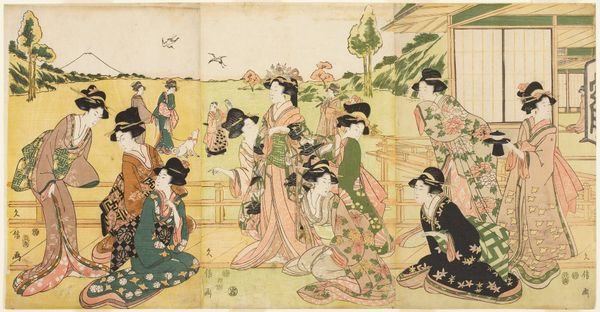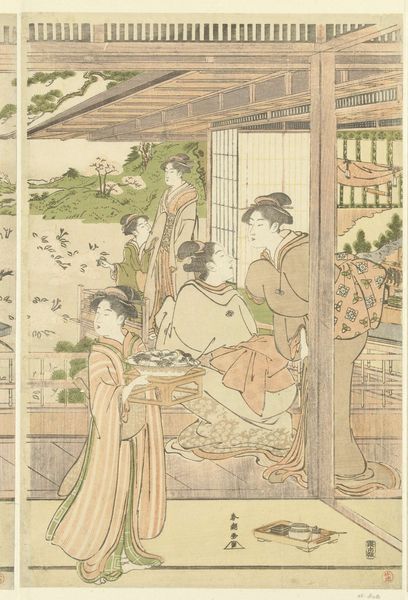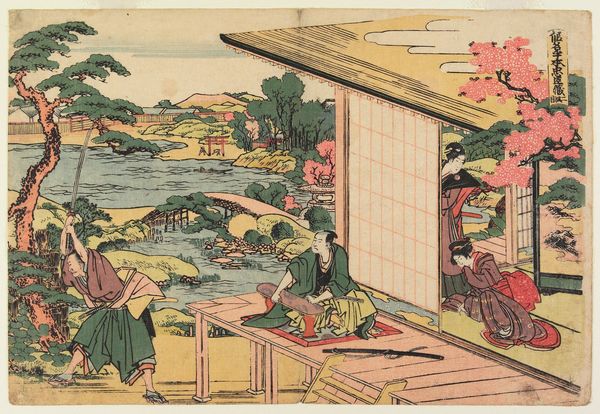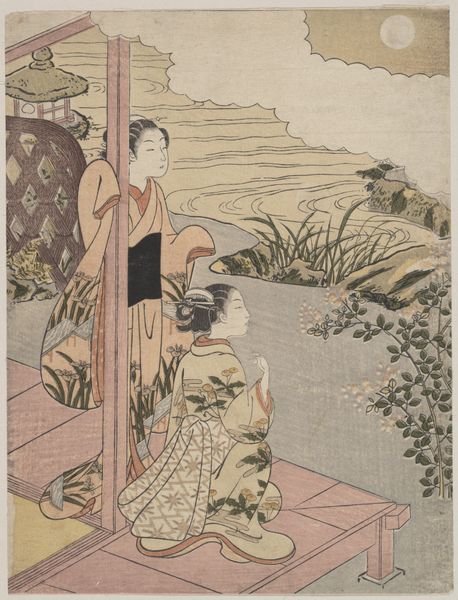
mixed-media, painting, print, watercolor, woodblock-print
#
portrait
#
mixed-media
#
water colours
#
painting
# print
#
asian-art
#
landscape
#
ukiyo-e
#
figuration
#
watercolor
#
woodblock-print
#
genre-painting
#
mixed medium
#
mixed media
#
erotic-art
Dimensions: 37.1 × 24.2 cm (right sheet), 37.2 × 24.8 cm (center sheet), 37.3 × 25.2 cm (left sheet)
Copyright: Public Domain
Curator: I’m immediately drawn to the complex layers of this artwork—almost like looking through a screen into another world. Editor: This is "Iris Garden" by Katsukawa Shunchō, a woodblock print made circa 1781-1789. It's currently housed here at the Art Institute of Chicago, a magnificent example of Ukiyo-e genre painting. Curator: Ah, yes. The materiality is significant here. We're talking about the labor involved in woodblock printing—each color carefully applied by hand—and the dissemination of imagery to a broader public than could afford painted scrolls. Ukiyo-e prints democratized art viewing in a way previously unseen. Editor: Precisely. And the floating world genre really highlights that accessibility, doesn’t it? The depictions of leisure, beauty, and idealized settings all contribute to this shared cultural experience. Looking at it today, I'm struck by how this work provided, perhaps, an escape, but also reinforced societal roles of women at the time. Curator: Let's think about pigment acquisition and its connection to social dynamics; those delicate colors weren't easily accessible. They speak to the networks required, perhaps also a certain affluence implied by its patrons to commission this kind of screen production. Editor: Indeed. The erotic undertones typical of Shunchō are also visible. While ostensibly a scene of refined women in an idyllic setting, the very openness, the invitation to gaze, implicates the viewer within established codes of Japanese erotica at the time, and surely, reinforces societal expectations of class and leisure. Curator: Absolutely. When we look at these screens in their original context – wealthy patrons displaying images of stylized luxury – we start to think about the production of desire as something almost literally constructed into these images. What narratives do such materials allow, even demand? Editor: It also highlights the importance of museums, such as this one, in preserving these histories but also recontextualizing how we view, experience, and consume imagery laden with historical and cultural meaning. Curator: Right. I’m left pondering how this artwork connects process, labor, representation and audience into the matrix of its very making. Editor: And for me, how such an image performed both escapism and subtle social instruction in its moment—and the multiple interpretations viewers might find in it today.
Comments
No comments
Be the first to comment and join the conversation on the ultimate creative platform.
